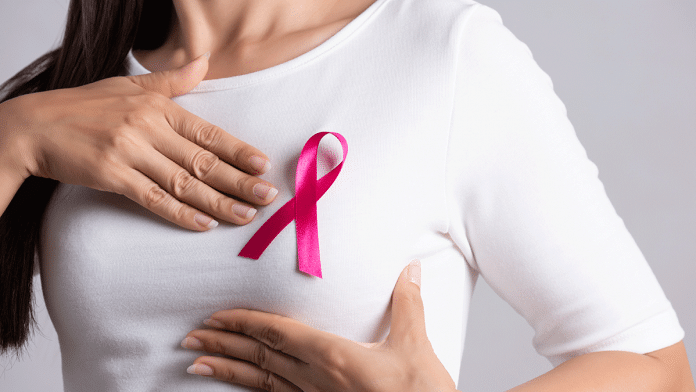With roughly one in eight women developing breast cancer in their lifetime, the odds are good that nearly everyone is affected by this disease in some way. Whether it’s a personal diagnosis or that of a loved one, finding answers to your questions and a supportive community of people who understand the experience can make all the difference!
A diagnosis of triple-negative breast cancer means that the three most common types of receptors known to fuel most breast cancer growth–estrogen, progesterone, and the HER-2/neu gene– are not present in the cancer tumor. This means that the breast cancer cells have tested negative for hormone epidermal growth factor receptor 2 (HER-2), estrogen receptors (ER), and progesterone receptors (PR).
Consider watching this video to know more about what is breast cancer….
Since the tumor cells lack the necessary receptors, conventional treatments like hormone therapy and drugs that target estrogen, progesterone, and HER-2 are ineffective. Using chemotherapy to treat triple-negative breast cancer is still a practical option. Triple-negative breast cancer may respond even better to chemotherapy in the earlier stages than many other forms of cancer.
Once a breast cancer diagnosis has been made using imaging tests and a biopsy, the cancer cells will be checked for certain features. If the cells do not have estrogen or progesterone receptors, and also do not make too much of the HER2 protein, the cancer is considered to be triple-negative breast cancer.
Triple-negative breast cancer occurs in about 10-20% of diagnosed breast cancers. It is more likely to affect younger people, African Americans, Hispanics, and those with a BRCA1 gene mutation.
Triple-negative breast cancer can be more aggressive and challenging to treat. Also, the disease is more likely to spread and recur. The stage of breast cancer and the grade of the tumor will influence your prognosis.
TNBC is more likely to recur than other types of breast cancer. TNBC tends to occur within a few years, and when they reappear, the prognosis is usually poor. The recurrence of TNBC often involves metastasis, typically spreading from the breast to the brain or lungs.
The symptoms of triple-negative breast cancer are often the same as those of other breast cancer types and include:
A lump or mass in the breast.
Breast pain or redness.
A nipple that turns inward or has a discharge.
Doctors aren’t sure what makes you more likely to get triple-negative breast cancer. Not many women do — it only affects up to 20% of those who have breast cancer. Triple-negative breast cancer has fewer treatment options than other types of invasive breast cancer. This is because the cancer cells do not have the estrogen or progesterone receptors or enough of the HER2 protein to make hormone therapy or targeted drugs work.
If cancer has not spread to distant sites, surgery is an option. Chemotherapy might be given first to shrink a large tumor followed by surgery. It might also be given after surgery to reduce the chances of cancer coming back.
Because hormone therapy and HER2 drugs are not choices for women with triple-negative breast cancer, chemotherapy is often used. In cases where cancer has spread to other parts of the body (stage IV), chemotherapy, and other treatments that can be considered include PARP inhibitors, platinum chemotherapy, or immunotherapy.
With your cancer treatment, you may experience side effects such as nausea, vomiting, pain, fatigue, and hair loss. These effects may be short-term, while others last for a longer time. It is important that you speak with your health care team about which side-effects you might experience from your treatment. Being diagnosed with TNBC can be overwhelming! Connect with your sources of strength, to bear with this condition.
Until Next Time,
Team Doctor ASKY!





















